
from 1968 Estée Lauder Estée ad with photos of Bethy Bussé and Ernest Shiftan collage
Notes for 1968 Estée Lauder Estée: aldehydes, bergamot, muguet, peach, carnation, coriander, honey, jasmine, iris, lilac, Moroccan rose, raspberry, tuberose, violet, ylang-ylang, cedarwood, musk, sandalwood, styrax, tree moss
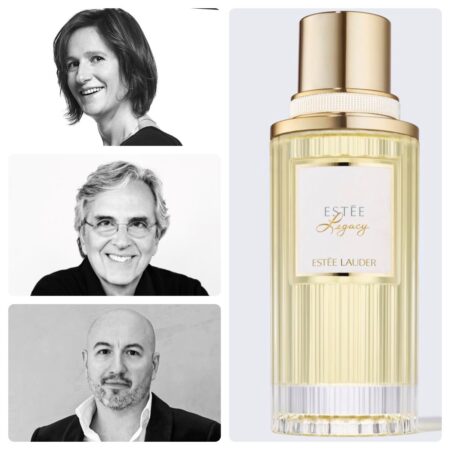
2024 Estee Lauder Estee Legacy and photos of Perfumers Anne Flipo, Carlos Benaim, and Bruno Jovanovic collage
Notes for 2024 Estée Lauder Estée Legacy: aldehydes (perceived, not listed), carnation accord (clove, jasmine, rose), ylang-ylang, sandalwood, amber accord, musk, honey notes
We at ÇaFleureBon never begin a review by listing the notes of a fragrance – but since we are juxtaposing the original 1968 Estée Lauder Estée with its most recent iteration, 2024’s Estée Legacy, it felt the proper way to approach them. In the interest of fairness, each perfume was composed by master perfumers: the original Estée by Bethy Bussé (under the hand of the brilliant Ernest Shiftan) – and the new Estée Lauder Estee from the Legacy collection by Anne Flipo, Carlos Benaim, and Bruno Jovanović (under the direction of Frederic Malle). It certainly is not an issue of who is better than whom or more talented, as one can plainly see: it’s a matter of taste, perspective, intensity, and saturation.
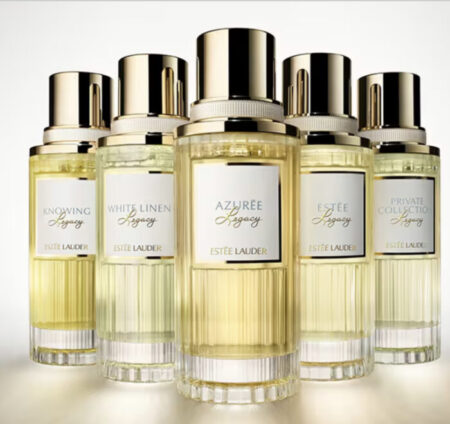
Estee Lauder Legacy Collection via the Estee Lauder Website
Last week I purchased a sample set of the Estée Lauder Legacy Collection after sampling them in an upscale department store. I owe a debt of gratitude to Michael Edwards and his latest volume, American Legends, The Evolution of American Fragrances – both for the honor of reviewing his book, and motivating me to rethink how I perceive Estée Lauder fragrances. Therein lies my apology: early on in my olfactory obsession I was a perfume snob, and I’m not proud of it. Other than a handful of American drugstore staples, all the perfumes I encountered happened to be European – primarily French, but also some Italian and few German fragrances. Like many other American mothers in the 1950s and ‘60s, my mother only applied perfume for special occasions – in which case Le Galion Sortilège and Lanvin Arpège filled the bill. My Tante Sylvia wore fragrance more often, and again, they were French: Carven Ma Griffe and Raphael’s Réplique (hence my lifelong love for green floral chypres). For many American women, a certain type of perfume prudery existed; nice women didn’t wear fragrance every day – and most frequently it was bought for them, as opposed to women purchasing it for themselves.

Youth Dew parfum Estée Lauder website
To my chagrin, my first Lauder encounter began with Youth Dew. Chagrin, because my aunt down the street wore Youth Dew exclusively – and she was not one to modulate her application, if you know what I mean. I smelt her coming from a block away and hid under the bed. She was a petite woman, so I was given all her hand-me-downs – and I couldn’t launder away the intense presence of her Youth Dew. Not a conducive introduction to Estée Lauder, I’m afraid. As a direct result, I didn’t give those fragrances a second thought for many years.
After reading American Legends, I visited the cosmetic counters and smelt all the Lauder fragrances I could get my hands and nose on. I was pleasantly surprised. Mr. Edwards’ book spurred me to purchase small samples of Lauder vintages, and besides Azurée (which I adored) and Aliage (one I really loved when it was released), I met up with Estée – and wasn’t prepared to be smitten. I was overwhelmed by the wow of volupté, the hedonistic abandon of wanton florals and heavy-hitting aldehydes: it was symphonic on a grand scale.
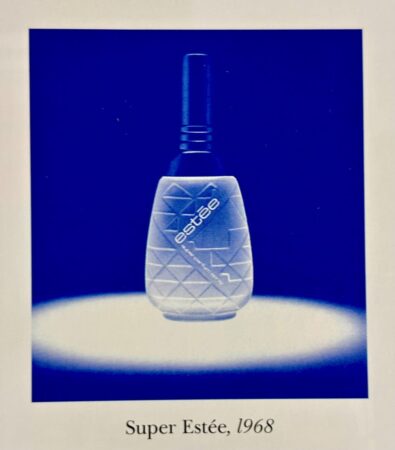
vintage ad via the Estée Lauder Companies
Bethy Bussé’s1968 Estée proved to be a game changer on several levels. It was the first fragrance to incorporate a synthetic raspberry note which was known as Frambinone®, also known as raspberry ketone methyl ester, Rasketone, Rastone, and Rheosmin: it is a naturally-occurring phenolic compound found in red raspberries. Frambinone®’s addition to fine florals had the effect of making them bloom. It took Mrs. Lauder years to perfect Estée– and its concentration was triple that of its contemporaries.
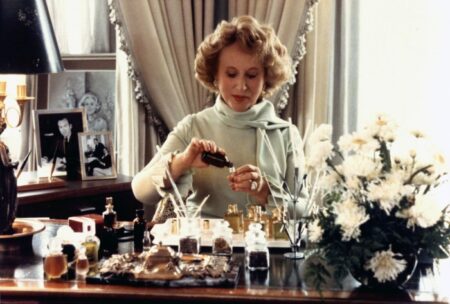
Estée Lauder via X
Mrs. Lauder was adamant that her fragrances be composed of an extraordinary percentage of naturals as well, in the hopes that this would render them more challenging to imitate. She insisted upon the finest materials available – and only later did she discuss the price. These factors alone set her apart from the herd; the French dismissed Lauder perfumes as loud and lacking refinement in comparison with their own tradition. Mrs. Lauder was a shrewd businesswoman as well as possessing heightened instincts and a good nose – and she believed that if American women were shelling out a goodly sum for perfume that it should at least be long-lasting. I think that her early perfumes speak for themselves: these are tenacious, complex, and linger on both skin and clothing ad infinitum.
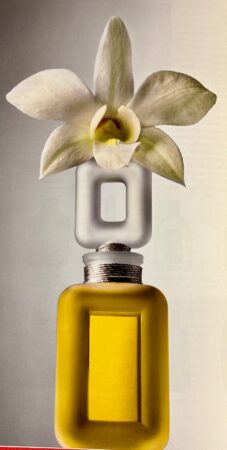
1968 via the brand
1968 Estée has been touted both as the first “super perfume” and Mrs. Lauder’s first masterpiece. It is said that the inspiration for this perfume occurred during a formal party which the Lauders attended. Mrs. Lauder’s attention was drawn to the shimmering reflection of two crystal chandeliers in a glass of champagne, and she pondered how this experience might be translated into a sumptuous fragrance. Estée’s presentation may have undergone various iterations (you’ll find it listed as a super perfume, super cologne, super eau de parfum – and housed in a number of flacon designs created by Ira Levy), but its formula remained a constant: it was an unabashed, unapologetic aldehydic floral recumbent upon a bed of macrocyclic musks, oakmoss, cedar, sandalwood, and styrax – an odalisque worthy of Scheherazade. Estee Lauder Estée is carnation- and honey-forward (perhaps influenced by Nina Ricci’s L’Air du Temps, which was a favorite of Mrs. Lauder), and radiant with olfactory luminaries: jasmine, lilac, tuberose, ylang-ylang, Moroccan rose, violet, and muguet. Styrax (also known as storax, a resin derived from liquidambar) possesses a warm balsamic note with elements of a lilac/hyacinth timbre and a delicate smokiness; it contributed to the fragrance’s exotic allure. As is the case with most Lauder perfumes, Estée is by no means a shrinking violet.

2024 Estee Lauder Estée via the brand
What of 2024’s Estée Legacy? Taken on its own merits, Estée Legacy is the glorious grandchild of a classic which has been re-envisioned by some of our best-loved noses: Anne Flipo, Carlos Benaim, and Bruno Jovanovič. Everything about it glitters – from the starchy-crisp, ebullient aldehydes to its carnation accord wed to buttery ylang-ylang – just indolic enough, but not sufficient to frighten children and horses. Its floral profile has been pared down and made more concise in its newest iteration. One might venture that several of the blossoms which some contemporary noses may perceive as dated/old fashioned have been removed, such as violet, lilac, and muguet. The intense carnality of tuberose is no longer present, along with cedar, oakmoss, raspberry, peach, and bergamot. Honey and musk remain in a different embodiment (as does a stronger sandalwood presence): they feel fresh and modern, substituting the furry underbelly one associates with vintage materials with a breezy, buoyant mien. In this wise, Estée Legacy has appropriated an older skeletal structure and fleshed it out via aromatic minimalism: the end result is lovable, wearable, and effervescently playful. Today’s Estée may dip its toes into the past, but it belongs to today and to the future. I understand why so many perfumistas have likened it to “Estée Lauder’s Chanel No. 5”, which is no trifling compliment. As we are fully aware, the classic Chanels have also undergone a facelift – and a very skillful one at that. I embrace the changes while I continue to hold past fragrant history very dear. I view Estée Legacy as a welcome addition to the Lauder pantheon of perfumes as it gathers a new generation into its fragrant fold.
All of the fragrances discussed have been purchased by me. My nose is my own…
All images from Fragrances of the World unless otherwise noted
~ Ida Meister, Deputy and Natural Perfumery Editor
Please enjoy the following reviews: Rachel K.Ng’s beautiful review of Estée Lauder Private Collection Legacy here, and Lauryn Beer’s inspired Estée Lauder Azurée 1969 here.
Follow us on Instagram @cafleurebonofficial @idameister @esteelauder @anneflipoperfumer @carlos.benaim @brunojovanovicperfumer
This is our Privacy Policy
